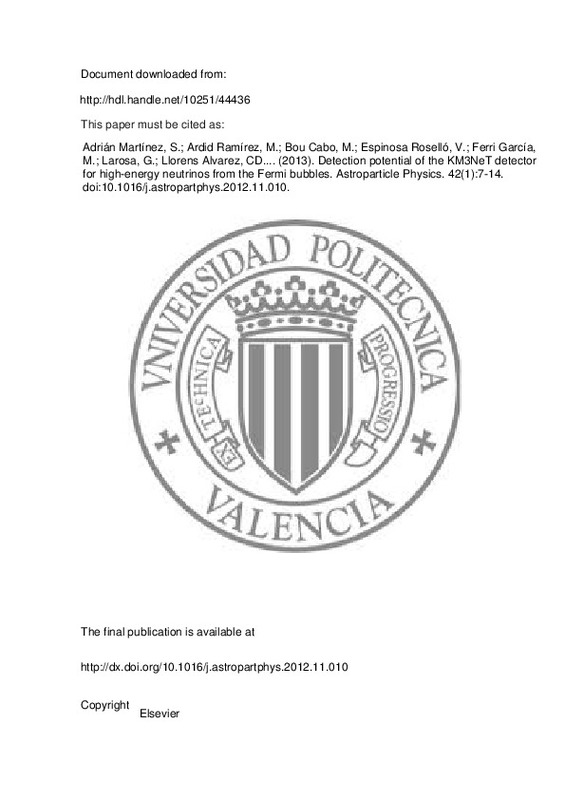JavaScript is disabled for your browser. Some features of this site may not work without it.
Buscar en RiuNet
Listar
Mi cuenta
Estadísticas
Ayuda RiuNet
Admin. UPV
Detection potential of the KM3NeT detector for high-energy neutrinos from the Fermi bubbles
Mostrar el registro completo del ítem
Adrián Martínez, S.; Ageron, M.; Aguilar, JA.; Aharonian, F.; Aiello, S.; Albert, A.; Alexandri, M.... (2013). Detection potential of the KM3NeT detector for high-energy neutrinos from the Fermi bubbles. Astroparticle Physics. 42(1):7-14. https://doi.org/10.1016/j.astropartphys.2012.11.010
Por favor, use este identificador para citar o enlazar este ítem: http://hdl.handle.net/10251/44436
Ficheros en el ítem
Metadatos del ítem
| Título: | Detection potential of the KM3NeT detector for high-energy neutrinos from the Fermi bubbles | |
| Autor: | Adrián Martínez, Silvia Ageron, M. Aguilar, J. A. Aharonian, F. Aiello, S. Albert, A. Alexandri, M. Bou Cabo, Manuel Larosa, Giuseppina | |
| Entidad UPV: |
|
|
| Fecha difusión: |
|
|
| Resumen: |
[EN] A recent analysis of the Fermi Large Area Telescope data provided evidence for a high-intensity emission of high-energy gamma rays with a E- 2 spectrum from two large areas, spanning 50º above and below the Galactic ...[+]
|
|
| Palabras clave: |
|
|
| Derechos de uso: | Reserva de todos los derechos | |
| Fuente: |
|
|
| DOI: |
|
|
| Editorial: |
|
|
| Versión del editor: | http://dx.doi.org/10.1016/j.astropartphys.2012.11.010 | |
| Código del Proyecto: |
|
|
| Agradecimientos: |
|
|
| Tipo: |
|







![[Cerrado]](/themes/UPV/images/candado.png)


